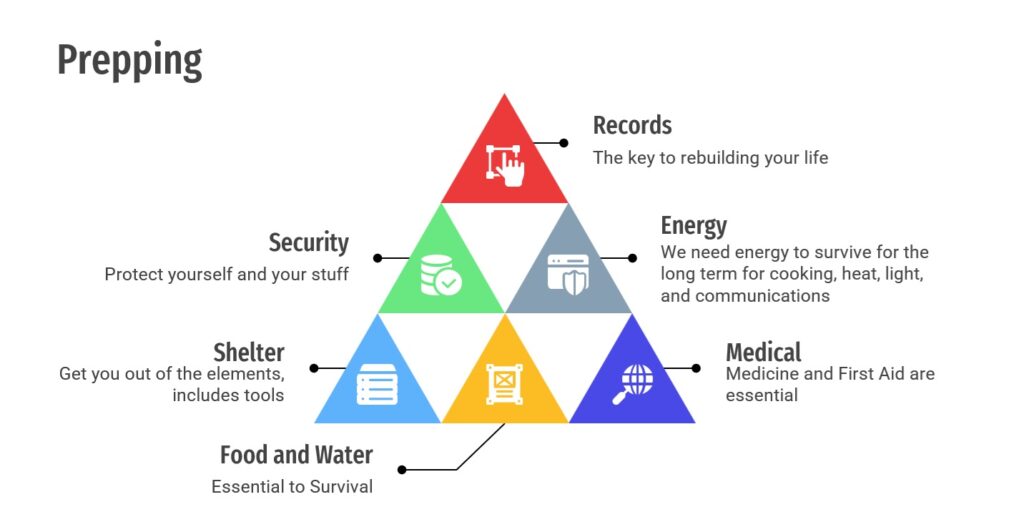There have been people who are saying that solar is unsafe because the batteries present a safety hazard. I was trying to keep the discussion here a simple one and not get bogged down in minutiae, but there are always people who want to make a simplified discussion more involved and complicated than it needed to be. Remember when I said that there was a lot of misinformation and outright bullshit out there?
If you don’t want to read this long post, you can refer to the CPSC page on solar system fires. Or you can read my lengthy research on the subject:
A little bit on my background. First, I was a Navy Electrician’s mate. I spent six years being professionally trained on high voltage electrical systems. I didn’t work with batteries, but I did work with a lot of electricl stuff. No, I am not an engineer, but I still have the basics.
Second, I spent decades as a firefighter. I have Bachelor’s degrees in Fire Science, in Public Safety Administration, (even though it doesn’t apply here, Nursing), and am a couple of classes shy of a degree in Chemistry. I am also certified in HAZMAT to the operations level as a result of my time as a firefighter. Yeah, I was trying to become a Battalion Chief, and I was actively working towards that, so I took a lot of college.
Let’s take a look at fire incidents involving batteries. Fire departments in the United States track fires throughout the US using the National Fire Incident Reporting System (NFIRS). Every time a fire department responds to any incident, they file a report that sends data to this system. Every kind of fire is tracked, including those by batteries. This has created a huge database. The National Fire Protection Association (NFPA) is the industry group that publishes fire protection information. The NFPA sets the standards that battery manufacturers in the US must follow, and that standard is NFPA 855.
Lithium battery fires are caused by a phenomenon called thermal runaway. In these situations, the increased temperature in the battery triggers it to raise temperatures even higher. As a result, the battery may become too hot to touch, smoke, catch fire, eject gas, or explode. As with any battery, a solar battery could potentially cause a fire if it overheats. But the top brands have strict quality control and are very quick to do a recall if something is found to go wrong, which is incredibly rare.
The type of lithium-ion battery can make a difference, too. There are different chemistries that are used in lithium-ion batteries, for example lithium cobalt oxide or lithium iron phosphate, and some are better than others when it comes to the risk of overheating. The safest in this regard and least likely to experience thermal runaway, is lithium iron phosphate. LiFePO4 batteries are also the most durable.
The other key to ensuring safety is to make sure everything is installed correctly and that the various components of your solar system are compatible. In particular, the charge controller that manages the power flowing from your solar panels into the battery: an incorrectly sized charge controller won’t protect your battery from overcharging properly and could potentially lead to problems.
To ensure the safety of your solar power system and property you should only invest in dependable and tested solar lithium-ion batteries from a reputable company that are properly installed by an experienced installer in accordance with the manufacturer’s recommendations. Always research battery brands before purchasing, including their product reliability, testing processes, and reviews.
That is one of the reasons why I decided to go with Tesla Powerwalls and why I won’t install it myself. I don’t have the experience with battery systems to the point where I trust myself to avoid a redneck engineering situation where I put together a system that works, but creates a fire hazard.
The Risk
What are the odds of an installed lithium battery catching fire? While the NFIRS system doesn’t track fires in lithium batteries versus other kinds of batteries, it does have pretty good statistics involving battery fires in general. Nearly every fire that I could find involving a lithium battery was in a cell phone, e-bike, or e-cigarette. These sorts of small batteries present fire hazards because they are small batteries where space is at a premium, and they are not properly vented due to those size constraints. Different type of issue than the larger batteries seen in EVs and large scale storage batteries.
Factors in battery fires are easy to track. Overcharging these smaller lithium batteries is the cause of these fires. According to the CPSC, approximately 54% of residential fires involving batteries resulted from overcharging or charging with incompatible chargers. In other words, people charging their e-cigarette, e-scooter, or e-bike with a cheap Chinese charger that they bought at Dollar General.
The CPSC reported that 18% of battery-related residential fires were caused by physical damage to the device. Not going to be an issue with a battery that is in a sturdy enclosure that is bolted to the wall. The NFPA states that approximately 20% of battery-related home fires resulted from improper storage conditions.
That’s 92 percent of all battery related fires being caused by improper charging, improper handling, or improper storage. This simply isn’t going to be an issue with a professionally installed home battery system.
Outside of that there are a few EV fires, and one other incident in a town called Surprise, Arizona. I searched every database that I could, and found a very few fires involving large storage batteries.
So avoiding all of the media hype, just what are the statistics involving batteries and fires?
- Each year, there are about 9,300 fires that occur in the United States.
- Tesla alone sells about a million EVs each year. There were 44 electric vehicle fires in 2023.
- In total, there were 390 fires, explosions, overheating, or incidents of venting involving batteries of all kinds in the US in 2023, but once you remove the smaller batteries as discussed above, that drops to less than 100.
- Worldwide, Underwriter’s Laboratories reports that there have been 51 injuries and 4 fatalities from large storage batteries since they began tracking them in 1995.
- Considering that there are about 2 million homes in the US with solar storage batteries in them, seeing 100 fires per year means that the risk is extremely low: about 1 in 20,000.
- The batteries in energy storage systems (ESSs) predominantly use safer lithium-iron phosphate (LFP) chemistry, compared with the nickel-manganese-cobalt (NMC) technology found in EVs.
- The failure rate of lithium batteries is about 1 in 40 million.
- LFP cell failure results in less energy release and a lower probability of fire. A LFP battery that fails is more likely to smoke than it is to catch fire.
So yes, about 1 in 100 fires in the US involves a large battery of some kind, with the majority of those being EV battery fires, and one known case of a home storage battery causing a fire in the past 5 years. The risk of a solar battery fire is exceedingly low, but it is possible.
What if A Battery Does Catch Fire?
The National Fire Sprinkler Association is an industry trade group that is responsible for tracking how fire sprinklers put out fires. This is a great resource for fires involving lithium batteries. While it is true that there have been several high profile incidents involving lithium batteries, the incidence of them is rare, as discussed above. That brings us to our next point:
A second statement was that Lithium fires are impossible to put out, so fire departments don’t even waste their time with them. That’s a surprise to me, after spending more than 30 years as a firefighter. The metal fires that gave me fits were magnesium fires. There are certain brands of cars that use magnesium in their transmissions that are hard to put out, and I hated car fires involving them.
One of the problems that I saw with vehicle fires in general is that many firefighters have trouble putting them out. The fire is usually in an area protected from water, and lobbing water on the roof or hood of a car from 30 feet away isn’t effective at putting out a fire in the engine or transmission. You need to get to the source of the fire for any sort of firefighting to be effective.
Still, let’s look at the available information. The National Fire Protection Association is the fire industry’s main source of research and information on fires and fire prevention. Here is what they have to say on the matter:
Water works just fine as a fire extinguishing medium since the lithium inside of these batteries are a lithium salt electrolyte and not pure lithium metal. Confusion on this topic stems from the fact that pure lithium (like what you see in the table of elements) is highly reactive with water, while lithium salts are non-reactive with water.
However, this is only true of small and EV batteries. I would not recommend fighting a home solar battery fire with water, because a home battery storage system will be energized with some relatively high voltages. Although there are some companies out there that are trying to sell specialized equipment for these fires, most of it looks like hogwash that is designed to steal your money. My bet will be on using dry chem and calling 911.
Conclusion
The risk of fire from solar batteries is rare, and I worry more about an ordinary electrical fire caused by the wiring in the wall or from a stove than I do from the solar or its associated battery system. The battery in my laptop is more likely to cause a fire than a solar battery.
I am not going to worry about it.

